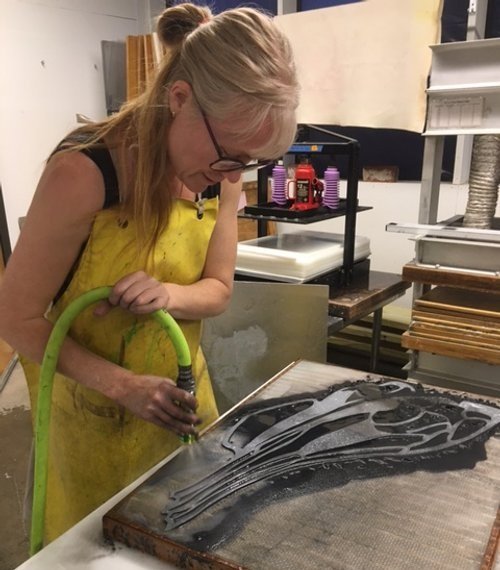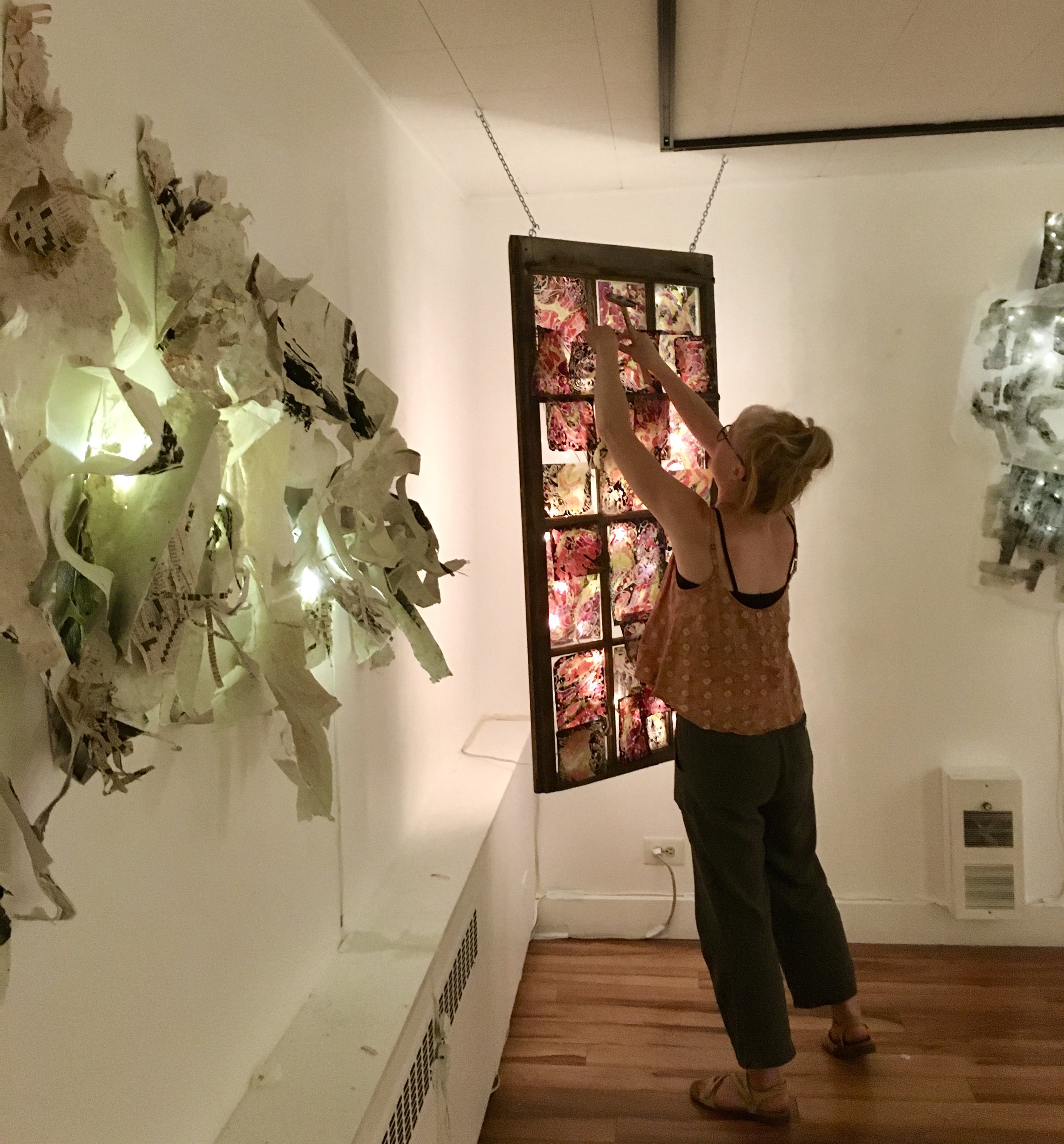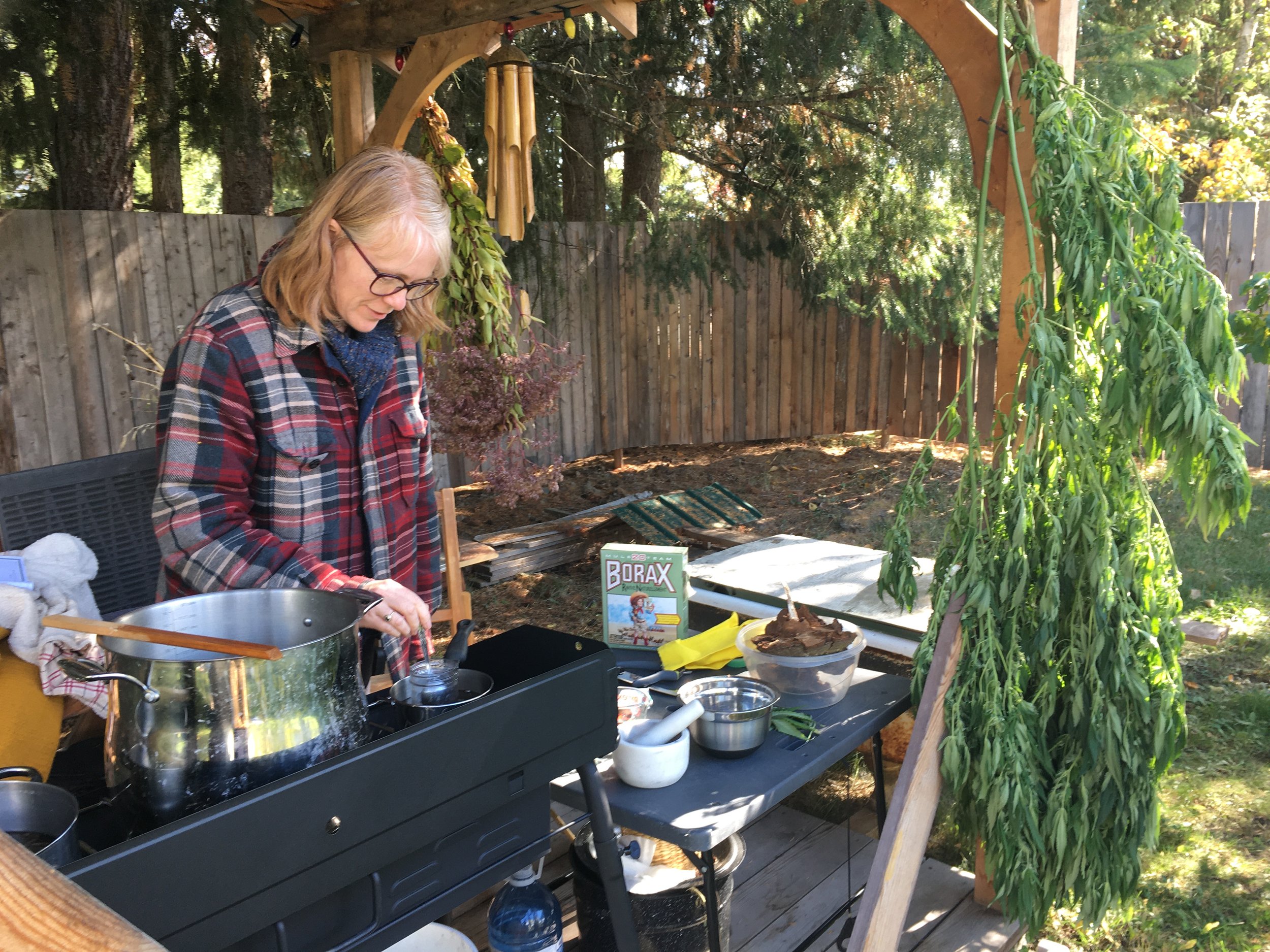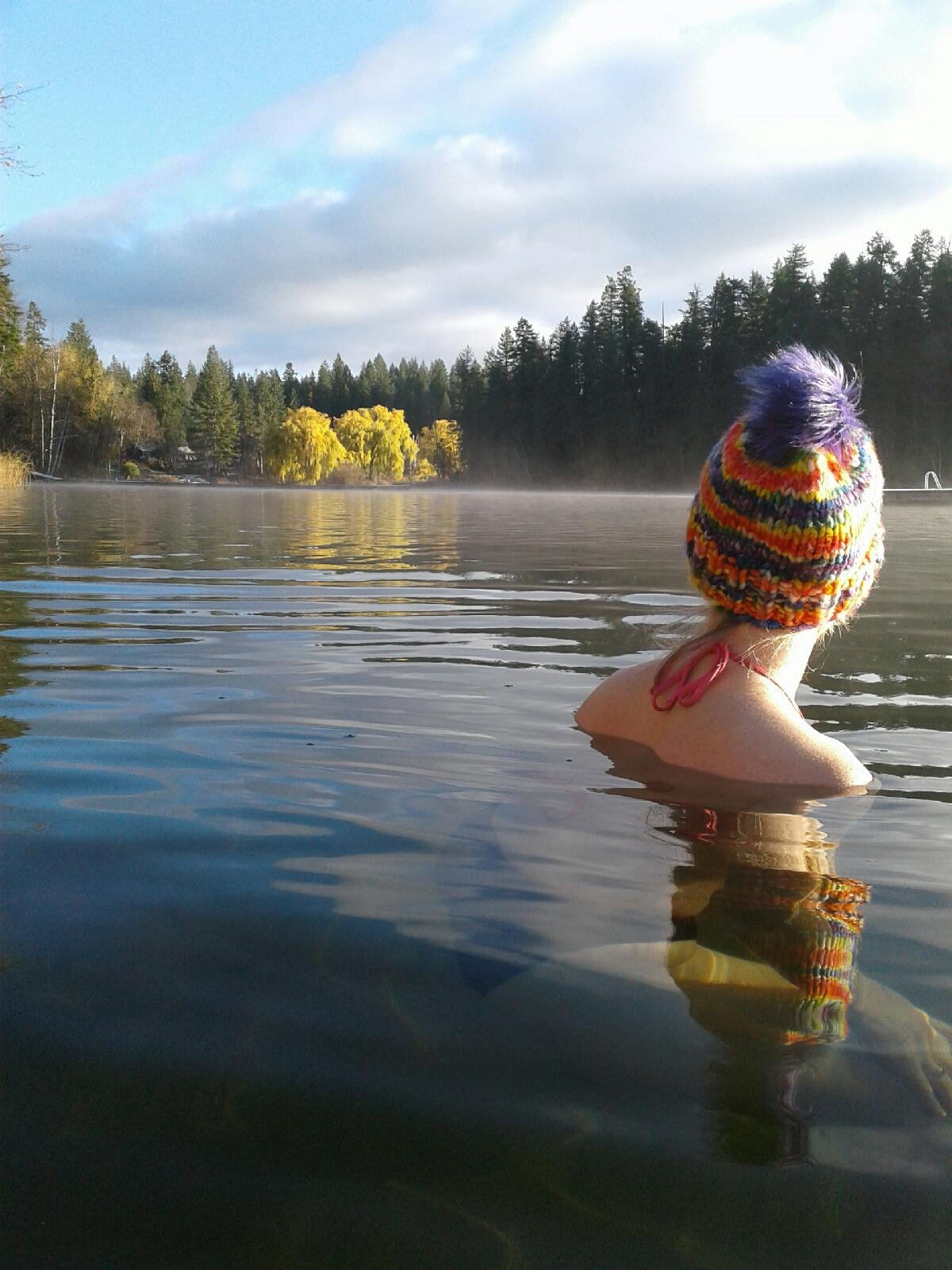My story
The spark for creating
At the age of 32 my life shattered. My beloved sister and best friend died from cancer, leaving behind two young children. At this point I had experienced the grief of losing other close relatives and friends but it was my sister’s passing that really changed my life. Deep loss transforms, and in my case I decided I wouldn’t hold back any longer.
I painted and painted. I became a beekeeper. I also became an RN and worked in palliative care. My work with clients (and then the loss of my father) inspired me to create handmade paper installations based on the stages of grief. My work on bereavement and interest in biodiversity earned me several Canada Council Grants. As a beekeeper I became intensely interested in pollinators and as a redhead I would often be visited by hummingbirds which sparked my interest to capture these remarkable fleeting beings.
One of my first memories was my Granny Anne placing a watercolour brush in my hand. I was told I was an artist and I assumed everyone else was too, as most of my family could draw and paint. My Granny proceeded to paint the African violets in a pot in front of us with precision lines of lavender while I splashed water around the page in awe of her skill. Several people in my extended family had been professional artists such as David Denbigh who had collaborated with Bill Ried, and Alastair Denbigh who was a scientific illustrator for the Federal Government of Canada. My Granny Anne however, suffered from the same sense of “not good enough” that I discovered many of the women in our family carried despite being incredible artists. My Granny Sally on the other side of the family was adept at painting women’s faces and their high fashion yet when complimented would shrug it off as nothing. I inherited these symptoms, as although I had gone to art school when I was young, as an intensely shy, sensitive and creative being, it was challenging to put myself out there. Wanting to burst forth with my creativity yet afraid it was not quite enough. When I lost my father, I watched as my Granny Anne and my mother continued with strength and fortitude. When my Granny Anne chose her own death with medical assistance I was able to be with her to the end. Loss brings inspiration to explore life in so many ways, but the pull has always brought me back to art. I have processed my grief through connection with nature and creativity. I became bored painting from a tube and started looking for colour in the landscape both from minerals and plants. This led me to the world of natural inks and dyes, textiles and fibres and then to papermaking. It has been a lifetime of learning to believe that I am an artist. But I’m here now embracing my gifts with compassion and empathy as my strengths in art. My passion is to help others transform through their loss and to bring beauty into the world.
Sarah was born and grew up in Tk’emlúps te Secwe̓pemc (Kamloops, BC). She has had several occupations including RN in community and palliative care. She now lives in Salmon Arm, Shuswap Lake, where she keeps bees, and is an active member of the Salmon Arm Arts Centre. Her hand made paper installations on bereavement have generated interest from The Salmon Arm Art Gallery where she was included in the 2020 exhibition “Dust to Dust”, The Revelstoke Art Gallery in a solo exhibition summer, 2023, entitled “The Beauty of Grief: Embracing Impermanence”, The Canada Council for the Arts and the BC Arts Council in the form of grants, as well as the Vernon Hospice House where she has donated a piece called “Letting Go” in commemoration of National Bereavement day which is on display near the nurses station. Sarah’s paintings and paper installations on the subject of native pollinators have also generated interest from multiple galleries including The Peachland Art Gallery where she and her artist friend Sara Wiens shared an exhibition titled “A place for the Pollinators” in the spring of 2023. Sarah was the 2019 recipient of the Marie Manson Memorial Arts Award, from the Shuswap District Arts Council for her exploration into an artist specific palette from found materials.
creating art
Sarah is interested in the beauty of impermanence and often highlights environmental themes such as the importance of water, biodiversity and pollinators. Her installation works use foraged and recycled materials, plant based inks and handmade paper in an experimental way to represent the emotions related to grief, loss, change and vulnerability. She enjoys roaming her own backyard on secwépemc'ulucw learning about plants.
I acknowledge that I live and create artwork on the traditional and unceded territory of The Secwépemc people. This land acknowledgment can not and would never be enough to make up for the terrible harms of colonialism that continue today. I recognize growing up under the white supremacy of our system I have benefited. Please consider donating to these Indigenous Organizations:





